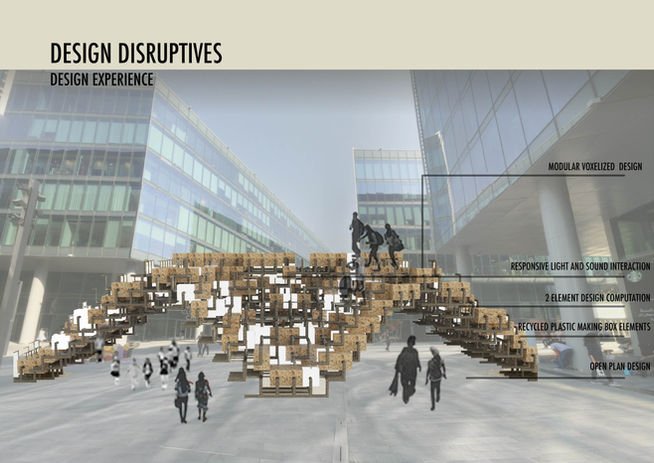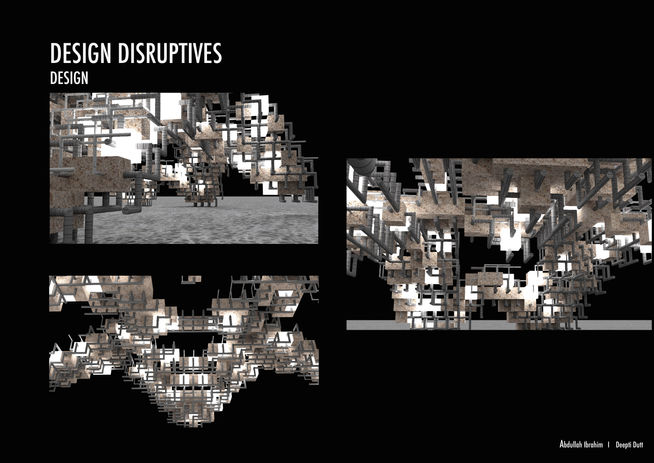top of page

Disruptive design disciplines _ Abwab Pavilion Design Proposal
By : Abdullah Ibrahim, Deepti Dutt
Misaligned times call for allied opportunities. As we began the design for Abwab, we, along with all of the world were experiencing similar challenges with the pandemic. We understood the responsibility of physical distancing and allowed our proposal to be guided by respecting the advisory. In our assessment, a physical distance should not hinder human connections. Our proposals explore subtler aspects of connections like visual and other sensory initiations.
This led us to an open plan in design. The idea confronts theories of confined spaces for distancing while continuing to respect boundaries that allow for visual connect. In order to create clean design elements, we tried multiple combinations of linear elements for our design proposal supportive of a comfortable assembly process. After many iterations, we zeroed in our main [0,1] i.e., 2 linear components of similar nature but in different sizes coming together in multiple permutations as a design compositional puzzle. We worked our design around modularity and fabricational assemblies driving the core of our design experience. The idea of simplifying by having 2 versatile components that give us a plethora of modular design assemblies also allows us to arrive at mobility of assembly and dis assembly where parts of the whole design can have an individuality even when placed apart.
A complimentary element was further added as the design evolved by introducing blocks, symbolic of our boundaries but continuing to hold key elements of interaction. These interactions hold the trajectory toward a communicative installation. This communication conveys notification via light and base sounds as more people come closer in clusters. We envision intelligent spaces, which can gently remind people gathering in clusters to respect physical boundaries via notifying them through light and sound outputs.
Through this design, we aspire to connect people beyond physical boundaries by utilizing visual initiators. Additionally, providing a spatial experience with a well explored design, computationally evolved to cater to our new disrupted reality with intelligent connections.
bottom of page






















